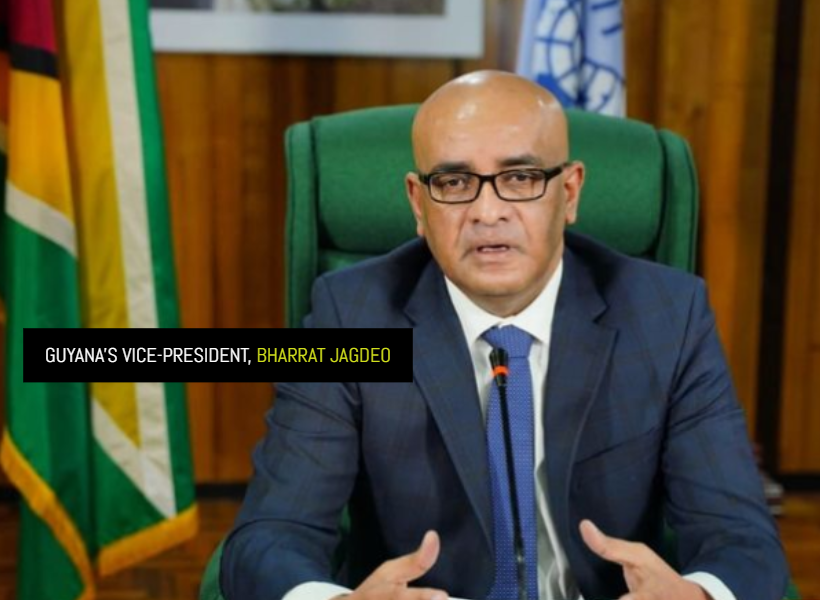In a recent interview with Reuters, Vice President, Dr. Bharrat Jagdeo clarified the government’s stance regarding the ongoing dispute between ExxonMobil, Chevron, and Hess Corporation over shares in Guyana’s Stabroek Block, a matter that could potentially impact Chevron’s $53 billion bid to acquire Hess.
For readers who are unaware of the matter, the disagreement, which recently shook the energy market, stems from differing interpretations of preemptive rights under the consortium’s joint operating agreement. This agreement involves Hess Corporation’s 30 percent stake in the Stabroek Block, alongside Exxon’s 45 percent and CNOOC’s 25 percent stakes.
While Chevron and Hess argue that this provision does not apply to their merger, Exxon holds the belief that it does and emphasizes the importance of upholding such rights for the industry’s integrity
Jagdeo, who is tasked with the management of the sector on behalf of the government, affirmed that Chevron’s acquisition of Hess would not require Guyana’s approval, highlighting Chevron’s global reputation and welcoming its entry into the country’s energy sector.
Reuters reported that Jagdeo has made it clear that his government is not involved in discussions regarding potential changes to the Joint Operating Agreement, stressing that any resolution will align with existing agreements and US laws.
This development comes amidst a backdrop of market turbulence, with Hess Corporation experiencing a nearly three percent drop in its shares, followed by a two percent decline in Chevron’s shares, as investors react to the uncertainty surrounding the dispute. The stakes are high, given the strategic importance of Guyana’s Stabroek Block, known for its vast oil reserves estimated at over 11 billion barrels.
Exxon’s assertion of preemptive rights to acquire Hess’ stake in Guyana’s assets adds another layer of complexity to the situation. While Chevron remains confident in its ability to navigate these challenges and proceed with the acquisition, analysts speculate on potential outcomes, including financial compensation and the possibility of arbitration.
The resolution of this dispute holds significant implications not only for the involved parties but also for Guyana’s burgeoning oil industry. With billions of dollars invested in the Stabroek Block and daily production exceeding 600,000 barrels, the outcome will shape the future trajectory of one of South America’s most promising energy sectors.
As negotiations continue and stakeholders await clarity, the energy landscape in Guyana remains in flux, with the outcome of this dispute poised to reverberate throughout the industry for years to come.
Meanwhile, Jagdeo was quoted as saying, “Whatever is the outcome we will live with it.”











